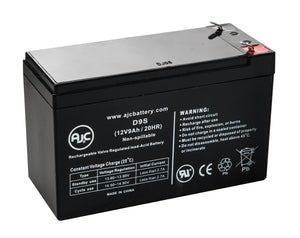Troubleshooting Your SLA Battery
Find out if the problem with your device is really the battery, or an issue with the device itself by following these troubleshooting tips.
No matter how well you take care of an SLA battery, it will eventually stop powering your device. But when your device stops working, how do you know the battery is the cause?
Batteries wear out after years of providing good service, batteries fail for a number of reasons, or there could be a problem in the electrical system of the device you are powering and the battery could be fine. The challenge is to figure out where the problem lies and how to fix it.
Is the battery old?
If the battery has been in place for years, it may just be too old to continue to hold a charge and operate the device it is in. Check how long you have been using it, find out the average life expectancy of that type of battery. If it is old, replace it.
Is the battery case swelled up?
Check the battery case for swelling. A battery will swell if it is over charged, which causes the cell plates to expand, putting pressure on the walls of the battery. The case can split or crack, causing a dangerous spill. A short in the battery terminals can also cause swelling, since the plates inside will heat up causing them to expand. You need to replace this battery, too.
However, the battery was not at fault originally, and you need to figure out what caused the overcharging, or the short circuit, to keep the new battery from suffering the same fate.
Check the instructions for charging the battery. Make sure you have the correct charger. You need a charger that will not over or under charge the battery because the charger is incorrect for the voltage of the battery. Make sure the charger is connected to the battery correctly. Shield the battery terminals with protectors, or terminal caps, so they don’t short circuit the battery. These precautions will prolong the life of the next battery, as well as reduce the risk of a fire caused by a too hot battery.
Are the terminals dirty or corroded?
If the terminals are not clean, they conduct less electricity and not power your device the way it should. Corrosion will occur any place two metals are in contact with each other, such as the clamps and terminals of a battery. You can take care of corrosion or dirt easily with a wire brush and baking soda and water. After you clean them, you can apply petroleum jelly or no-corrode gel to each terminal to protect them and to improve the conductivity between the clamp and the battery. Battery terminal protectors or boots installed over each post will help keep them clean and lessen corrosion.
Maybe it’s not the battery?
If the lights in your car work even though the car won’t start, it’s probably NOT the battery. You will want to check the rest of the electrical system to see where the problem may lie. In other devices, there may not be headlights or an equivalent to test.
How can I check the charge?
You can check the charge by attaching a voltmeter to the battery. The red lead attaches to the positive terminal, and the black lead attaches to the negative terminal. For a car battery, the voltmeter should read between 12.65 and 12.77 volts meaning the battery has a full charge. Check the manual for other battery sizes to determine how many volts indicate a full charge.
At this point, if the battery looks fine, the terminals are clean and a peripheral like headlights are still operating, or you have a solid voltmeter reading, it’s not the battery, and you need to investigate the electrical system the battery is supposed to power.
If you find that it is time to replace your battery, make sure to check the requirements of your device and get the battery that will have the right power for your needs, and while you are at it, make sure you have the right charger to keep your SLA battery in working order for a long time to come.


